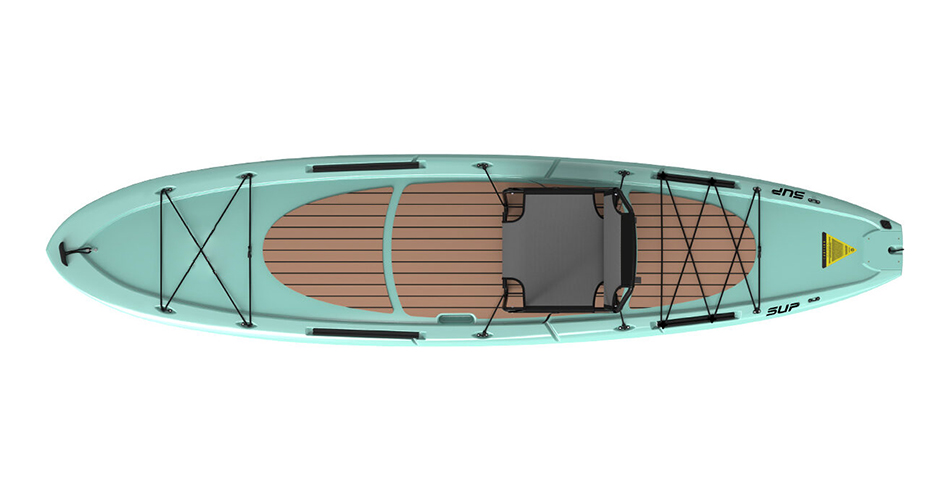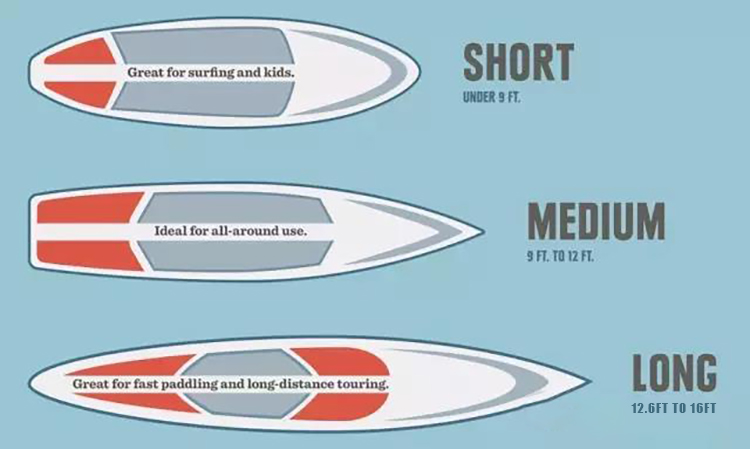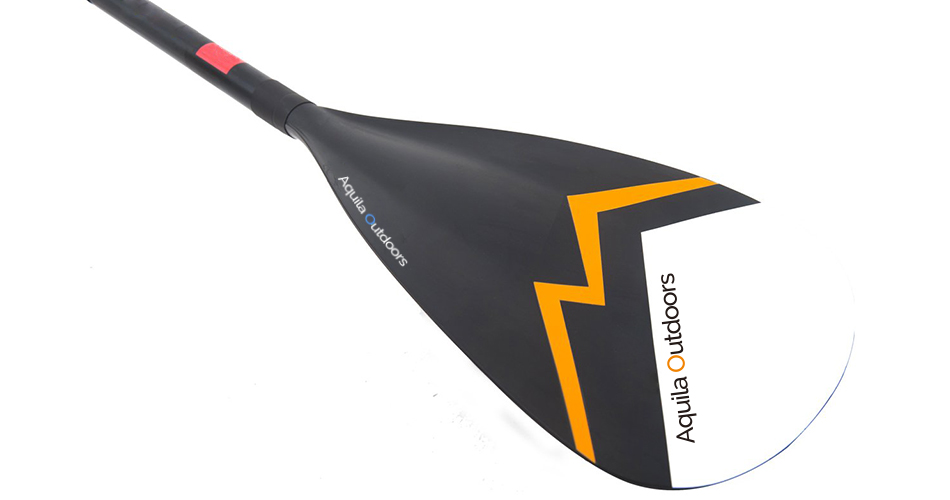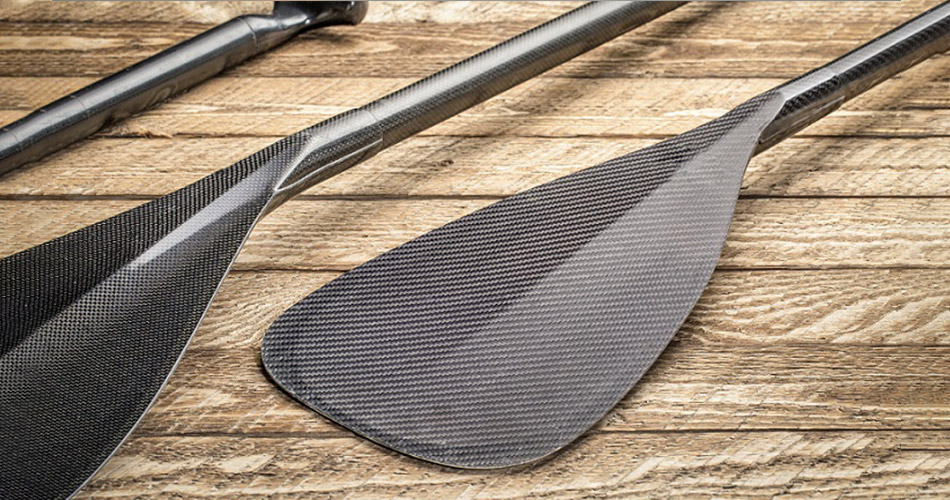
How to Choose SUP board structure
SUP board structure
When it comes to SUP paddle structure, there are two main types, inflatable and hardboard.

Inflatable SUP paddle board
Inflatable SUPs feature PVC exteriors with drop-stitch construction that create an air core. They come with a pump for inflating the board and a storage bag for when it’s not in use. While inflatables are easier to store and transport, they tend to ride higher in the water and have a bit more flex than solid boards, which give some paddlers a less stable feel.
Why get an inflatable SUP:
· You have limited storage space: If you live in a small house, condo or apartment, you may not have room for a large solid board. Inflatable SUPs are compact when deflated and can easily be stowed in small spaces, like a closet or the trunk of a car.
· You’re traveling: If your travels take you to a lake or the sea, bring along an inflatable SUP. Packed away in its storage bag, an inflatable can be checked on an airplane or stowed in a train, bus or car. Most storage bags have backpack straps for easy carrying.
· You’re hiking to a lake: If you’re headed to an alpine lake and want to paddle, you certainly cannot carry a solid board. An inflatable stowed in its storage bag is still heavy, but it’s pretty much your only option.
· You’re paddling whitewater: Like a raft or inflatable kayak, an inflatable SUP is better suited to handle bumps up against rocks and logs than a solid board.
· You like SUP yoga: You don’t have to get an inflatable for SUP yoga, but they tend to be a bit softer than solid boards, making them more comfortable for yoga poses.
hard board
These are the original SUPs. They’re usually made with foam cores that are surrounded by layers of fiberglass. They are typically regarded as being more rigid than inflatables, which can make them feel more stable, especially in choppy water or when paddled by heavier people.
Most solid boards have an EPS foam core that’s wrapped with fiberglass and epoxy. Carbon fiber and plastic are also used for board exteriors.
Why get a solid SUP:
· Stability is important: A solid board is a tad more rigid than an inflatable board, which can provide a more stable feel, especially when riding waves. Solid boards also tend to ride lower in the water, which can also create a more stable feel.
· You want to travel fast and far: Solid boards tend to have a bit less drag than inflatables. This means they can be faster and more efficient when paddling long distances.
· You have a place to store it: Solid SUPs can take up a lot of space. If you have ample room in your garage and a vehicle that can transport it, then a solid SUP is a fine choice.
Displacement (volume) and load of SUP plate
A SUP board must work for your size. If the board doesn’t displace the correct amount of water for your weight, you won’t be supported well and the board may feel unstable. Board volume and weight capacity are two important factors that affect how stable you will feel.
Volume: A paddle board's volume, expressed in liters, gives an indication of the board’s ability to float with weight on it. The higher the volume, the more weight the board can support.
A short board can have a high volume if it is wide and thick. Likewise, a long board can have a low volume if it is narrow and thin. This means that a person weighing 200 lbs. who wants to ride his or her SUP in surf will look for a short, maneuverable board with a high volume.
Weight capacity: Each paddle board has a rider weight capacity, which is listed in pounds on the specs tab on REI.com. Knowing weight capacity is important because if you’re too heavy for a board, it will ride lower in the water and be difficult to paddle. You can't really be too light for a board, so as long as you weigh less than the weight capacity, you're good to go.
Length of SUP plate

Riding waves in the ocean and paddling fast on a calm lake are very different styles of paddle boarding that require different length boards for the best performance. In general, longer boards are faster than shorter boards, but shorter boards are more maneuverable. It’s helpful to understand how length relates to volume and weight capacity. A longer board can increase the volume and capacity, which can make it feel more stable (width and thickness are also factors in volume and capacity; see the SUP Width and SUP Thickness sections of this article).
Consider, too, board length in regards to your type of car, home storage situation and length of walk to the beach or shore (longer boards are more difficult to carry, especially in windy places).
Short boards (under 9 ft.): Great for surfing and/or kids. Short boards are more maneuverable than long boards, making them great for surfing waves. Boards designed specifically for kids are typically around 8 ft. long.
Medium boards (9 ft. to 12 ft.): Ideal for all-around use on calm lakes and in the surf.
Long boards (12.6 ft. or 14 ft.): Great for fast paddling and long-distance touring. Long boards are faster than short and medium boards and they tend to track straighter. If you’re interested in paddling fast or touring long distances, consider a long board. Longer boards also give you more room for storing gear when you’re touring.
The width of the SUP
Board width is another important factor in determining stability. SUPs are made up to 36" wide to accommodate a variety of body types.
Wide boards (about 31" or wider): Wide boards are more stable than narrow boards, making them easier to stand on. However, they are slower than narrow boards.
Narrow boards (29" to 30"): Narrow boards are faster than wide boards, however, they can be less stable.
The thickness of a SUP also affects the stability. In general, a thicker board will be more stable, but also less responsive, than a thinner board. If you’re a beginner paddler, you may want to choose a thicker board.




 yuanfang627
yuanfang627